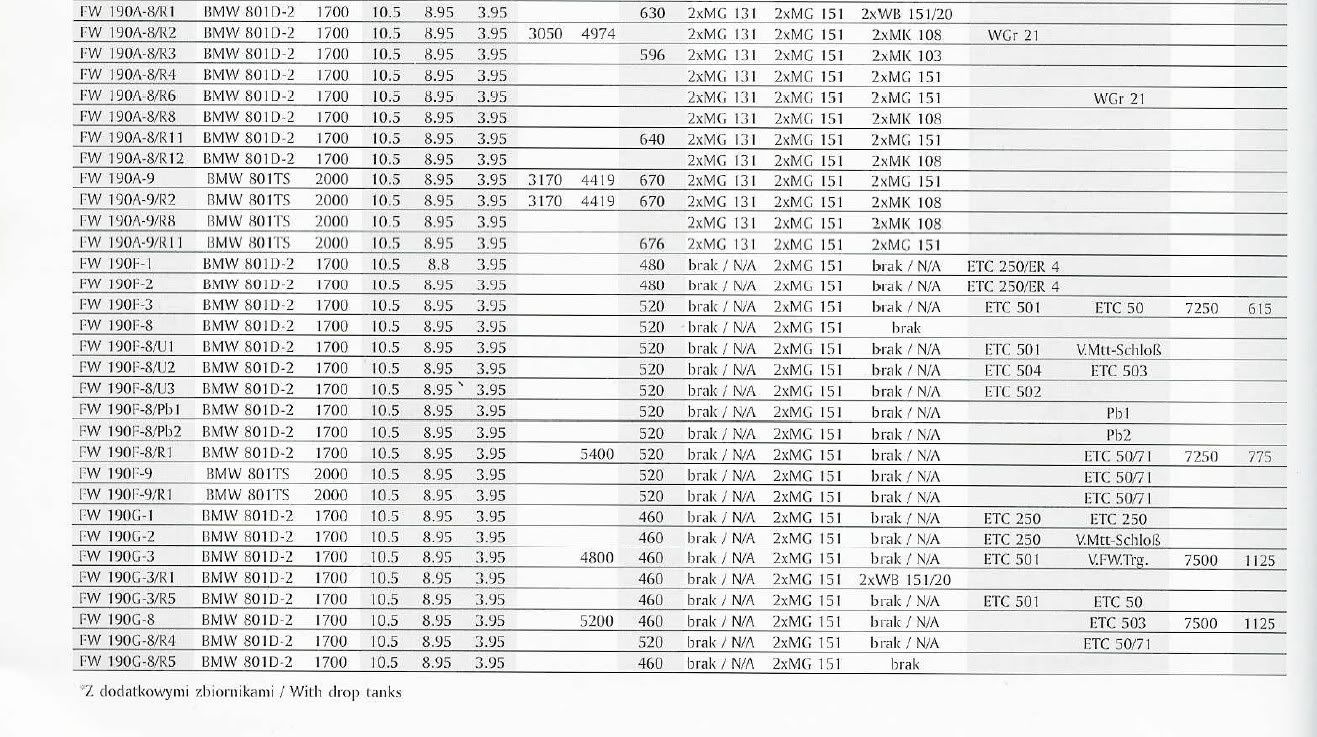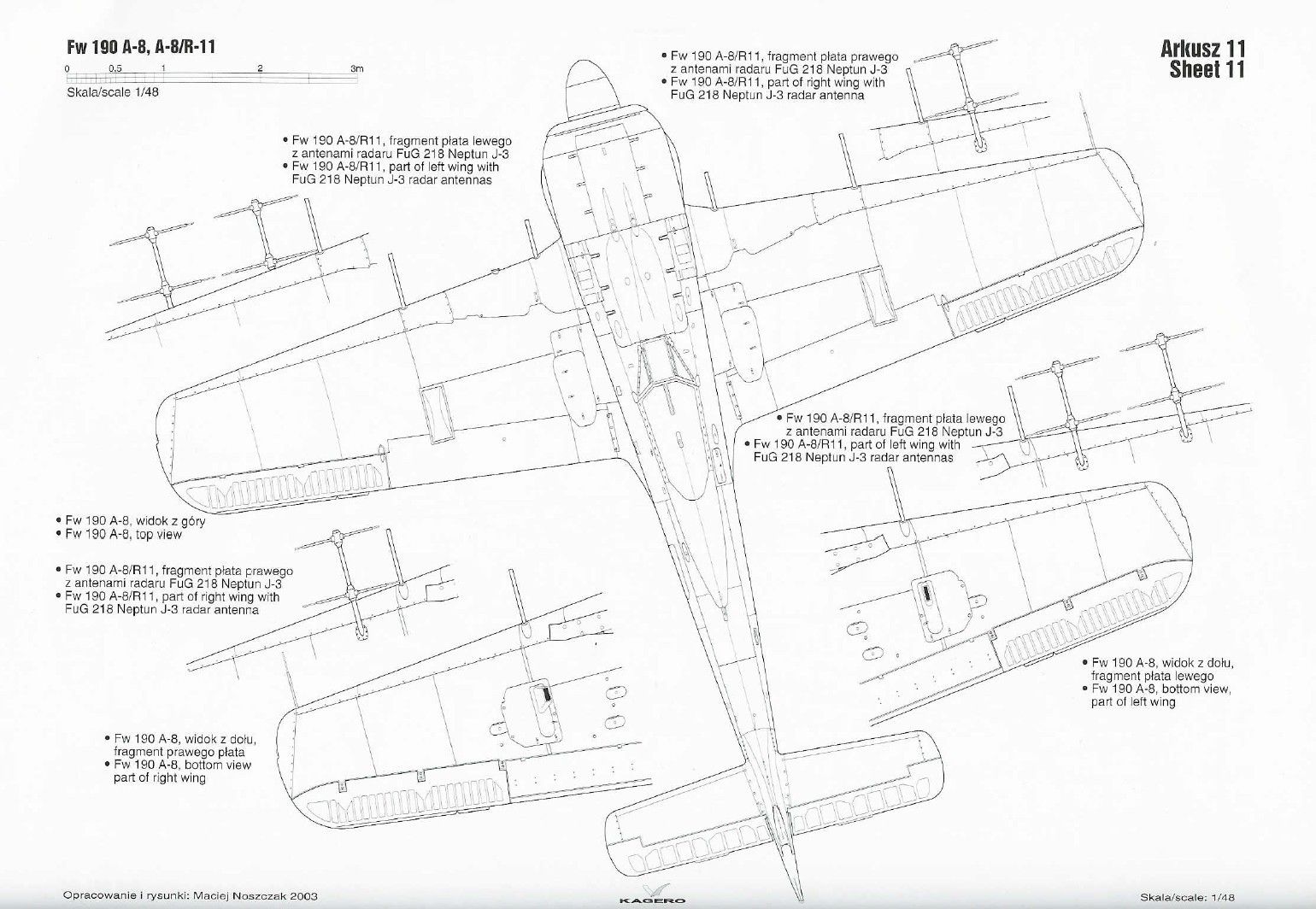
 |
|
#271
|
|||
|
|||
|
Quote:
http://www.wwiiaircraftperformance.org/sl-wade.html http://www.wwiiaircraftperformance.org/wade-dive.jpg Notice that the boost pressure of bf109G is 1.75ata, so that's bf109G equipped with MW50. The source says the dive acceleration (looks like 45 degree)of spitfire IX and BF109G6as is roughly same, but it also points outs that spitfire IX was outdived by bf109g6as INITIALLY. It's very interesting to find initial dive advantage of German aircraft for many times . My comprehension of this report is: When both spitfireIX and BF109G6as fly side by side with same speed/altitude, and begin to dive from low-medium speed, bf109g6as will outdive spitfireIX. The reasons are obvious,: 1) bf109 has better engine thrust/weight rario because same engine output/prop efficiency at low-medium speed but 109 is lighter. 2)bf109 has smaller wing area, so less air drag than spit. It was widely accepted that bf109 could outdive spitfire INITIALLY among RAF pilots during WWII. However, as speed building up, spitfire IX begin to catch up with bf109! Roughly near max allowable, spitfire IX could become "side by side" again with bf109. therefore, both dive accelerations are roughly same. And spitfire XIV will slightly ahead of bf109g6as in the end of high speed dive, although still be outdived INITIALLY. There is also indirect comparation: http://www.hawkertempest.se/TacticalTrials.htm When comparing tempestmkv and spitfire XIV, it says: Quote:
Quote:
Why 4-blade propeller spitfires dives quite fast at high speed? More weight than bf109? Perhaps.More propeller efficiency at high speed? Perhaps. Last edited by BlackBerry; 06-06-2012 at 12:40 AM. |
|
#272
|
|||
|
|||
|
http://www.spitfireperformance.com/spit9v109g.html
F/Lt. Irving "Hap" Kennedy did a stint with No. 185 flying Spitfire IXs from Malta in June 1943 and wrote: The real compensation was that I was strapped into a brand new Spitfre IX. The Malta squadrons were being re-equipped with "Nines" after a couple of years, including the blitz year of 1942, during which the Spit V was the defense of the Island. Recently the Luftwaffe had moved their latest Messerschmitt Me 109G into Sicily along with some Focke-Wulf 190 squadrons. These latter were superb aircraft and the old Spit V just couldn't keep up to them. The Spit IX, a heavier brute in the engine but the same airframe with the lovely loose ailerons, an additional 250 h.p., a four-bladed prop, and a supercharger that came in with a tremendous kick at 21,000 feet, once more gave us the advantage of a superior performance. We were full of enthusiasm. ... At 1440 Hours, a red flare went up from the dispersal hut, arching over the strip, and my mechanic jumped to his battery. I pulled on my helmet, fastened the oxygen mask, put on my gloves, turned the oxygen valve on, and primed twice. The engine broke into a roar. The mechanic pulled out the battery cable and gave me a "thumbs up" and I was tearing down the strip with full throttle and 3000 R.P.M. Airbourne, gear up, throttle back a little to let the lads catch up, at 4500 f.p.m. climb. ... I had the throttle open and I rolled over and headed on a course to cut the angle toward the 109s, which had separated a little. I wound on nose-heavy trim so essential to keep the aircraft in a high-speed dive. The Spit responded eagerly as I dove more steeply than the 109s, with Red Two and Three no doubt following, although I could not see them. The controls got very heavy as the airspeed needle moved far right at 480 mph. (Corrected for altitude, true airspeed approached 600 mph.) I could see that I was gaining on the nearest Me 109. That was something new. We were already half-way to Sicily; that was no problem. We knew from years of experience, dating back to the boys who had been in the Battle of Britain, that the 109 with its slim thirty-two foot wing was initially faster in a dive than we were. But we accepted that compromise happily in exchange for our broad superior-lift wing with its better climb and turn. One couldn't have it both ways. In any case, I was closing on this Me 109, which I recognised as a G. Perhaps he wasn't using full throttle. We were down to 5,000 feet and our dive had become quite shallow. I could see the Sicilian coast a few miles ahead. Now I was within range at 300 yards, and I let him have a good squirt. The first strikes were on the port radiator from which white smoke poured, indicating a glycol coolant leak. I knew I had him before the engine broke out in heavy black smoke. (Bf 109 G-4 "Black 14" of 2(H)/14, flown by Leutnant Friedrich Zander, shot down 10 June 1943) Squadron Leader I.F. Kennedy DFC & Bar, Black Crosses of my Wingtip, (General Store Publishing House, Ontario, 1995), pp.58-61. ////////// You fly ahead, and your wingman 500m behind of you with same speed/altitude. If you dive first, your wing man could NOT overtake you in a dive because he is same dive acceleration with you. Isn't it? So if your bf109G6as is caught by a spitfire IX with same energy and 400m behind of you, you could dive to escape from spit, in the beginning you could pull away from spit but in the end, the distance between you is roughly same as beginning--400m. With same energy, if you want to catch/get closer to your opponent who dives ahead of you, your aircraft should has the ability of outdiving him. If you are in a P51, P47 or Tempest, congratulations! You could get closer to his bf109 or fw190 in a high speed dive. Last edited by BlackBerry; 06-05-2012 at 04:05 PM. |
|
#273
|
|||
|
|||
|
Quote:
To simulate pilot strength? It depends on the decision of mod developing team. Last edited by BlackBerry; 06-05-2012 at 05:32 PM. |
|
#274
|
|||
|
|||
|
Quote:
Fw190A8, 3.5 tons weight, 2000HP, prop efficiceny 80%, Vmax at sea level=580km/h=161m/s P47D,7 tons, 2000HP, prop efficiceny 80%, Vmax at sea level=550km/h=153m/s Vmax is a equilirium point. Formular is below, on the left side of formular is the thrust part, including engine thrust and gravity vector, on the right side,is air braking force which is proportional square of speed. g*sin(0)+enginethrust/mass == dragcoefficent*(580^2) Enginethrust=engineoutput*efficiecny/speed For fw190a8 at Vmax, level flight =dive angle with 0 Total thrust=enginethrust=2000*735*80%/161=7300N=21.3% of weight that is to say, with total thrust/ratio of 21.3%, fw190 could achieve 161m/s. When dive at 45 degree and assume double speed=322m/s. Add 70.7% gravity thrust/weight ratio, minus 10.6% engineThrust/weight ratio, finally we get 81.35% thrust/weight ratio, thus 81.35/21.3=3.82 times thrusts/weight as before, and 1.95 times of airspeed is needed to counteract. 1.95 is roughly equal to 2, so the new equilirium speed is around 580*2=1160km/h. Let's see P47, when Vmax level flight. Total thrust=enginethrust=2000*735*80%/153=7686N=11.2% of weight When dive at 45 degree ,assume the speed is 322m/s=2.1 times Speed before. Add 70.7% gravity thrust/weight ratio, minus 5.87% engineThrust/weight ratio, finally we get 76% thrust/weight ratio, thus 76/11.2=6.79 times thrusts/weight as before, and 2.6 times of airspeed is needed to counteract 2.6>2.1 so 322m/s air is not enough to counteract the increased thrust/weight ratio, so 322m/s is below P47 new equilirium speed. To sum up, when dive at 45 degree, P47 get more total thrust/weight ratio increase (6.79 times vs 3.82 times) than fw190a8, thus higher equilibrium speed. Last edited by BlackBerry; 06-05-2012 at 05:38 PM. |
|
#275
|
||||
|
||||
|
Quote:
|
|
#276
|
|||
|
|||
|
All units in SI. Assume there is no air compressibility during dive, and 80% prop efficiency all along dive.
Fw190A8 m----mass,3500kg A----dive angle p----engine output,HP r----propeller efficeincy=0.8=80% Vmax ----max level speed at SL, 580km/h=161m/s d----drag coefficient g----gravity, 9.8 m/s^2 t---- engine thrust, N when level flys at Vmax, fw190a8 in equilirium, zero acceleratiom, all forces are balanced. t=P*r/V=2000*735*0.8/161=7300N m*g* sin(0)+t=d*Vmax^2 d=t/Vmax^2=7300/161^2=0.2816 when dive in 45 degree, let the new equilirium speed as V: new engine thrust should be 7300*(161/V) m*g* sin(45)+t=d*V^2 3500*9.8*0.707+7300*(161/V)=0.2816*V^2 thus v^3-86115V-4173651=0 Finally, we get V=315.2m/s=1134.7km/h. And BMW801 still produce thrust as 7300*(161/315.2)=3729N=380kgf>10% aircraft weight P47D m----mass,6000kg A----dive angle p----engine output,HP r----propeller efficeincy=0.8=80% Vmax ----max level speed at SL 550km/h=153m/s d----drag coefficient g----gravity, 9.8 m/s^2 t---- engine thrust, N when level flys at Vmax, P47D in equilirium, zero acceleratiom, all forces are balanced. t=P*r/V=2000*735*0.8/153=7686N m*g* sin(0)+t=d*Vmax^2 d=t/Vmax^2=7686/153^2=0.3283>0.2816 Obviuosly ,P47d has more air drag coefficenct due to bigger wing area. when dive in 45 degree, let the new equilirium speed as V: new engine thrust should be 7686*(153/V) m*g* sin(45)+t=d*V^2 6000*9.8*0.707+7686*(153/V)=0.3283*V^2 v^3-126628V-3581962=0 Finally, we get V=369.2m/s=1329.1km/h>1134.7km/h. And R2800 still produce thrust as 7686*(153/369.2)=3187N=325kgf>5% aircraft weight Obviuosly, 6-ton p47d gets more benifit than 3.5-ton fw190A8 in a 45 degree dive. IMO, P47D has two advantage over fw190a8 in a steep dive. 1) more weight, more benifit. This is proved by calculations above. I believe the il2 FM could handle this kind of calculation very well. 2) higher propeller efficiency at high speed(>Vmax) dive.I suspect the il2 FM could NOT handle this kind of calculation very well. I suggest that we try to reproduce the P47D vs Fw190G in a 65 degree dive from 10000ft altitude in il2 4.11m, at initial dive stage, let fw190G go ahead, pull away rapidly. This can be achieved by decreasing P47 throttle. And then we can check whether the p47D(with full throttle) could overtake fw190G in the end of dive, ie, at 3000ft altitude with much greater speed. If not, I prefer that il2 FM has undermodelled 4-blade aircrafts/overmodelled 3-blade dive acceleration for many years. That's totally ridiculous for allied aircrafts such as p47, p51, tempest, spitfire,f4u, etc. Last edited by BlackBerry; 06-06-2012 at 04:40 AM. |
|
#277
|
||||
|
||||
|
Quote:
The P47 achieves a Vmax of 339mph on 2300shp and the FW-190A8 achieves 359mph on 1980 shp. |
|
#278
|
|||
|
|||
|
Quote:
t=P*r/V=1980*735*0.8/161=7231N m*g* sin(0)+t=d*Vmax^2 d=t/Vmax^2=7231/161^2=0.2790 when dive in 45 degree, let the new equilirium speed as V: new engine thrust should be 7231*(161/V) m*g* sin(45)+t=d*V^2 3500*9.8*0.707+7231*(161/V)=0.2790*V^2 thus v^3-86918V-4172728=0 Finally, we get V=316.4m/s=1139km/h. P47D 339mph=151.6m/s when level flys at Vmax, P47D in equilirium, zero acceleratiom, all forces are balanced. t=P*r/V=2300*735*0.8/151.6=8921N m*g* sin(0)+t=d*Vmax^2 d=t/Vmax^2=8921/151.6^2=0.3882>0.2816 Obviuosly ,P47d has more air drag coefficenct due to bigger wing area. when dive in 45 degree, let the new equilirium speed as V: new engine thrust should be 8921*(151.6/V) m*g* sin(45)+t=d*V^2 6000*9.8*0.707+8921*(151.6/V)=0.3882*V^2 v^3-107089V-3483833=0 Finally, we get V=342.4m/s=1232.6km/h>1139km/h. Last edited by BlackBerry; 06-06-2012 at 02:47 PM. |
|
#279
|
|||
|
|||
|
http://en.wikipedia.org/wiki/Pratt_%...00_Double_Wasp
R-2800-59 - 2,300 hp (1,700 kW)   2300HP ---345mph@SL Specifications (P-47D Thunderbolt) General characteristics Crew: 1 Length: 36 ft 1 in (11.00 m) Wingspan: 40 ft 9 in (12.42 m) Height: 14 ft 8 in (4.47 m) Wing area: 300 ft² (27.87 m²) Empty weight: 10,000 lb (4,536 kg) Loaded weight: 17,500 lb (7,938 kg) Specifications (Fw 190 A-8 ) Data from Fw 190 A 8 General characteristics Crew: 1 Length: 9.00 m (29 ft 5 in) Wingspan: 10.51 m (34 ft 5 in) Height: 3.95 m (12 ft 12 in) Wing area: 18.30 m² (196.99 ft²) Empty weight: 3,200 kg (7,060 lb) Loaded weight: 4,417 kg (9,735 lb) Last edited by BlackBerry; 06-06-2012 at 01:52 PM. |
|
#280
|
||||
|
||||
|
Regarding the Fw-190A8 details, this may be of some use to you, since your figures are slightly off.
  
Last edited by fruitbat; 06-06-2012 at 02:11 PM. |
 |
|
|